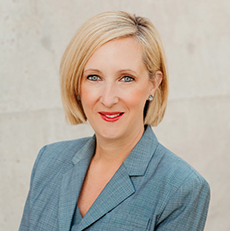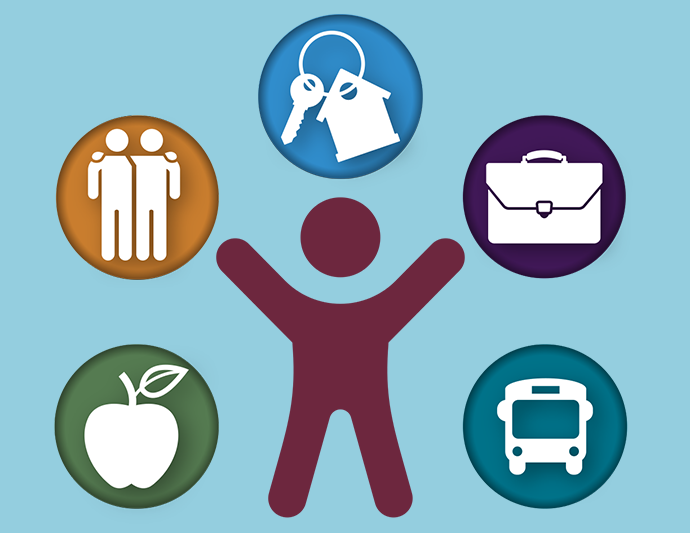
Getty Images
How AZ Medicaid Expanded Its Role in Social Determinants of Health Coverage
Arizona's Medicaid program took on an innovative role in addressing social determinants of health, particularly in housing.
In September 2022, Arizona Health Care Cost Containment System (AHCCCS)—Arizona’s Medicaid program—received the Robert Wood Johnson Foundation’s 2022 Medicaid Innovation Award in “Initiatives to Address Social Determinants of Health” for its Whole Person Care Initiative.

The Medicaid program’s Whole Person Care Initiative launched in November 2019 in order to address social determinants of health needs among Arizona Medicaid beneficiaries. However, the underlying AHCCCS principles that carried this initiative forward had started years before the initiative’s launch.
“Over the course of the last decade, we have been engaged in a very deliberative effort to integrate care—and when I talk about integrated care in this context, it's really the integration of acute care and behavioral health services,” Jami Snyder, director of AHCCCS, explained to HealthPayerIntelligence.
“We now have a number of providers in our delivery system that offer the full range of physical acute care services and behavioral health services. But as we started to think about what's next on this integration journey, it really became clear to us that if we were going to take sort of a comprehensive approach to integrated care, that we needed to broaden our perspective to include connecting individuals that we serve to needed social services and support. So really taking that whole person care perspective on our integration journey.”
The Whole Person Care Initiative was born out of this effort.
What is Arizona’s Whole Person Care Initiative?
The Whole Person Care Initiative focuses on addressing four social determinants of health: providing transitional housing support, offering non-medical transportation support, reducing social isolation through the long-term care system, and creating a statewide closed-loop referral system that enables providers to connect members to social services.
One of these components was a social determinant of health barrier in which the Medicaid program had already seen some success: housing.
For years prior to launching the Whole Person Care Initiative, AHCCCS received a $30 million appropriation from the state’s legislature in order to subsidize rent for Medicaid beneficiaries. This appropriation served around 2,500 Medicaid beneficiaries per year.
Beyond the housing initiative, the program encouraged beneficiaries to leverage AHCCCS-provided bus passes for non-emergency medical transportation. The non-emergency medical transportation benefit had existed before the Whole Person Care Initiative but required more promotion.
Also, in order to address social isolation among Medicaid beneficiaries, the Whole Person Care Initiative sought to institute a broader habilitation benefit with peer support opportunities and activities such as book clubs. These services could be particularly critical for young adults with developmental disabilities.
The innovative element of AHCCCS’s social determinants of health strategy lies in the way it answers a perpetual tension in the healthcare sector, Snyder explained.
“There's been a longtime debate around the role of Medicaid programs in addressing those needs. Should it be more about the community-based organizations or philanthropic organizations or faith-based organizations?” Snyder said.
To Snyder, Medicaid should not take over resolving social determinants of health barriers, but neither should programs relinquish all responsibility to community-based organizations and other stakeholders. Instead, Medicaid should share responsibility—taking an active part in responding to these challenges that its beneficiaries face while giving its community and federal partners the freedom to do what they are uniquely qualified to do.
“One of the key lessons is really understanding that balancing act, understanding the role that Medicaid can play versus other organizations who really focus on some of these social service supports, whether it's community based organizations or other state agencies, agencies at the federal level and making sure that they're really partnering to ensure that we're appropriately drawing on resources and just understanding some of the challenges our federal partners face when they seek to do this work,” Snyder said.
Snyder shared how tying in clinical data, aligning with federal and state partners, and enabling innovation among private payer partners can empower Medicaid programs to share responsibility in their social determinants of health initiatives and expand coverage for beneficiaries' needs.

Tie initiatives to clinical data
To take an active role in the social determinants of health space—particularly when addressing a barrier like housing—Medicaid agencies have to tie proposed solutions back to clinical data.
Data is critical to proving the viability of any health insurance solution. But in this situation, any Medicaid agency seeking to cover housing or similar social determinants of health has a particularly challenging case to make. The agency has to prove that, as a clinical entity, it has a meaningful role to play in a traditionally non-clinical environment which already has oversight from other federal and state agencies.
AHCCCS had already been working in this housing for years and had accumulated data on its interventions. As a result, housing was a natural place for AHCCCS to start when they launched the Whole Person Care Initiative.
Snyder built--and continues to build--the case for Arizona's innovative housing benefit by demonstrating its clinical impact.
The program’s 2020 data revealed that, among individuals who received long-term housing support, there was a 31 percent reduction in emergency department visits and a 44 percent reduction in inpatient stays. The Medicaid program also saved more than $5,500 per member per month.
“That's really been the kind of foundation of our current request to CMS, which we're hoping to get approval on any day to do some more work in the housing arena because from our perspective, we can be more impactful when we house someone long term than we can perhaps with any sort of clinical intervention like traditional clinical intervention that we offer,” Snyder said.
Medicaid agencies that want to follow in Arizona’s footsteps will have to be able to work with available data to connect their proposed solutions to health outcome improvements.
In addition to justifying social determinants of health innovation, data is useful for enacting social determinants of health interventions. However, Snyder noted that Medicaid agencies have to be prepared to face data exchange challenges when seeking to address social determinants of health like housing.
For example, AHCCCS wanted to give private health plans more agency around outreach to homeless populations during the coronavirus pandemic. The urgency around this initiative was particularly high because homeless communities were at high risk for virus transmission.
However, the Medicaid program encountered barriers due to data privacy regulations. As critical as these protections are, they lengthened AHCCCS’s homeless outreach process by challenging the transfer information between stakeholders.
“It took us some time, but we were able to draw information from the data from the Homeless Management Information System, match it up against our enrollment files, and then provide that information to the health plans so that they could do some targeted and proactive outreach to individuals who are homeless that were enrolled with their health plans,” Snyder explained.
Ultimately, clinical data is essential to both launching and sustaining social determinants of health Medicaid interventions.
Align, collaborate with federal, state partners
Collaborating with federal and state agencies is critical for any Medicaid program seeking to move away from the sidelines and into a major role addressing social determinants of health.
Snyder expressed excitement about the response from federal agencies. As a testament to the growing interest in innovative social determinants of health efforts at the federal level, she pointed to section 1115 demonstration waivers coming out of Oregon, Massachusetts, and California that focus on improving housing and other addressing social determinants of health. All three have received CMS approvals.
In Arizona specifically, state agencies have rallied around housing, making collaboration with state partners more seamless. Snyder’s team at AHCCCS has partnered with the Department of Housing and currently is amid a collaborative project with the National Academy for State Health Policy (NASHP) with Department of Housing and Department of Economic Security.
“There is a huge sense of urgency among all of our state level agencies,” Snyder said.
“We've seen tremendous increase in individuals living with homelessness or experiencing homelessness. And so there's a lot of political and operational will in that space right now. And so we think it's important to take advantage of that dedication and level of interest that's out there at the current time.”
Enable private payers to innovate
In a managed care environment, Medicaid programs cannot effectively integrate social determinants of health solutions into their benefits without involvement from their private payer partners.
Arizona was the first state to establish a managed care model that was mandatory across nearly the entire Medicaid population. When AHCCCS took a more innovative approach to its social determinants of health involvement, federal and state partners were not the only ones to gravitate toward this initiative. The Medicaid agency’s managed care partners also adopted the mission.
For example, the Arizona Medicaid program requires health plans to reinvest six percent of their profits into the communities they serve. A few years ago, the private health plans reinvested some of those profits into funding affordable housing projects. This is particularly crucial in a state where local news headlines warn of an affordable housing crisis and housing construction is considered critical.
In Medicaid managed care, private health plans have a significant role to play in breaking down social determinants of health barriers for Medicaid enrollees.
“My advice to payers would be to really coordinate and collaborate with your Medicaid agency to ensure that your efforts are aligned,” Snyder said.
She emphasized that Medicaid agencies form the regulatory framework through which payers have the freedom to come up with solutions and programs. But it is in the private sector and in partnership with private payers where most of the innovation happens. It may not come naturally to private payers who would normally be competitors, but inter-stakeholder collaboration is essential for industrywide improvement.
“To break through some of those competitive barriers for the greater good is really important,” Snyder emphasized. “When that happens, Medicaid agencies just really appreciate it and recognize that they're working together to address these important needs within our communities.”
In the future, AHCCCS hopes to expand its housing support.
The program’s latest waiver request, an amendment to its program called Housing and Health Opportunities (H2O), seeks a broader range of home supports and up to six months of transitional housing for individuals who are between institutional placements and permanent housing arrangements.
Additionally, Snyder intends to expand Arizona Medicaid’s targeted investments program, known as Targeted Investments 2.0 (TI 2.0). Through this program, AHCCCS offers providers access to a closed loop referral platform. The program received CMS approval on October 14, 2022 and will run through September 30, 2027.
Providers who identify a social determinant of health need that a beneficiary might be encountering can flag that beneficiary in the system. The system will connect the beneficiary to a referral database if the beneficiary has provided consent to be contacted.
In order to promote utilization of this feature, AHCCCS will offer incentive payments to providers who a participation agreement. Providers can earn additional funding if they make 10 or more referrals in a year.
As Medicaid programs seek to integrate their benefits in a more holistic way, Arizona's example demonstrates that tying initiatives to clinical data, aligning with state and federal partners, and empowering private payer partners will be key to success.






